Problemist Diary 5: A merry-go-round tale of problems
When a beginner is just starting his journey into chess, it is mostly the visual appeal of the game that seduces him and keeps him going. The understanding of deeper intricacies comes much later, initially it is just the way pieces move on board, the vivid patterns they create is what spark off interest. In the present article, the author Satanick Mukhuty, takes you back to this primal fascination. The topic is Rundlauf , a distinctly geometric theme, and there are five problems - all masterworks by giants of composition. So put your thinking caps on and dive in!
Problemist Diary Part V - Rundlauf
'Round-trip' would be the most suitable English equivalent of the German word Rundlauf. In the context of chess problems, the term describes the return of a piece to its initial square as in the diagram position by means of a circuitous route. The piece might sometimes traverse a well-defined geometric shape (eg: square, triangle etc), other times it might be a completely weird roundabout path. As a basic example let us consider the following theoretical endgame position:
White to play and win
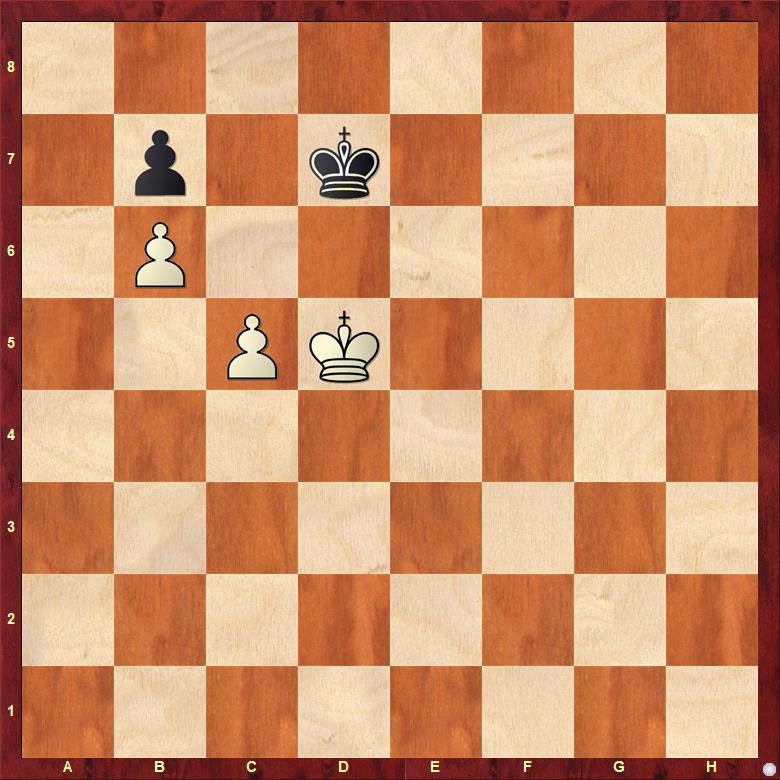
White's winning plan thus consists of carrying out a triangulation with his king and losing a tempo in the process. After 1.Ke5 Kc6 2.Kd4 Kd7 3.Kd5, the same position has been reached with the difference that now it is Black's turn. Note 1.c6+? Kc8 2.Kd6 Kb8 instead would have been only a draw.
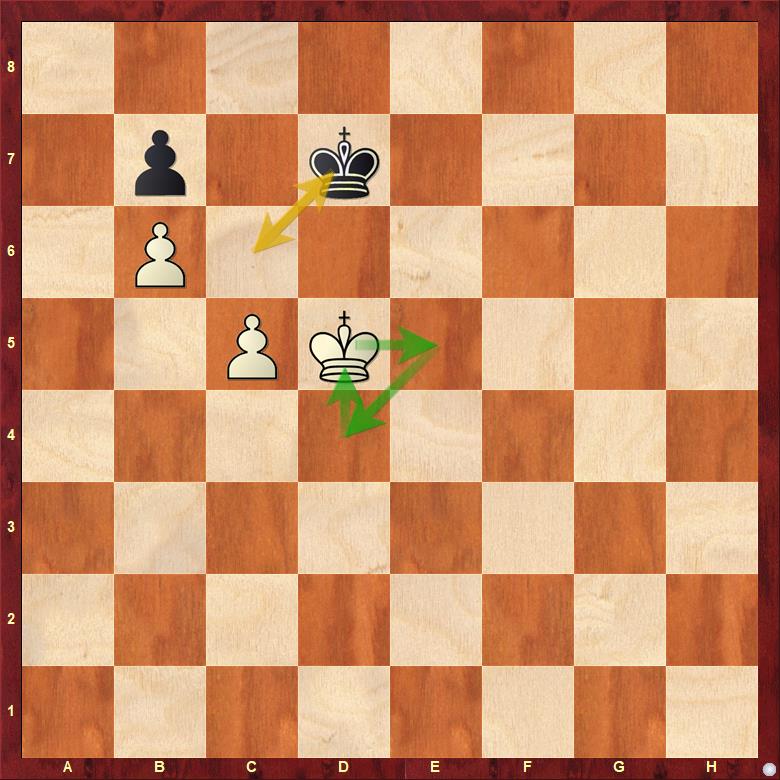
In the position above, the black king has to move from d7 after which White wins easily. Triangulation is a known technique in endgames and is the simplest example of a Rundlauf maneuver. But apart from this its occurrence is quite rare in over-the-board play, for moving a single piece multiple times in a loop is seemingly quite a counterproductive act. In chess problems however this effect (owing to its paradoxical nature) is realized with great pomp. Let us begin by looking at a pristinely economic rendition of the theme with a bishop.
PROBLEM 1
Stefan Schneider, Deutsche Schachzeitung 1956, 1st Prize
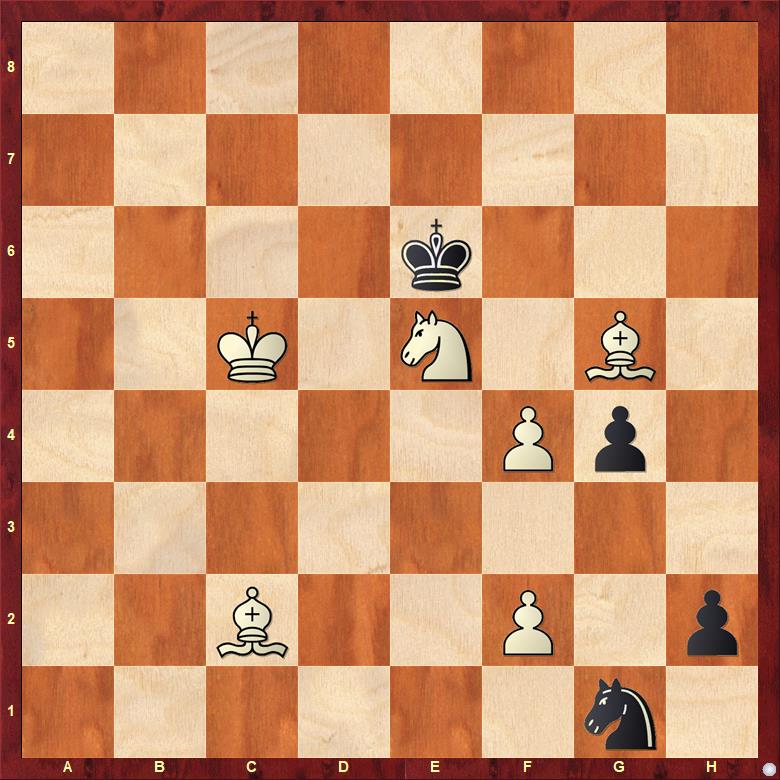
The solution begins with 1.Ba4 threatening Bd7#, Black parries with 1...Kf5 and after 2.Bd7+ Ke4 3.Be8 White is again threatening mate in 1 on g6!
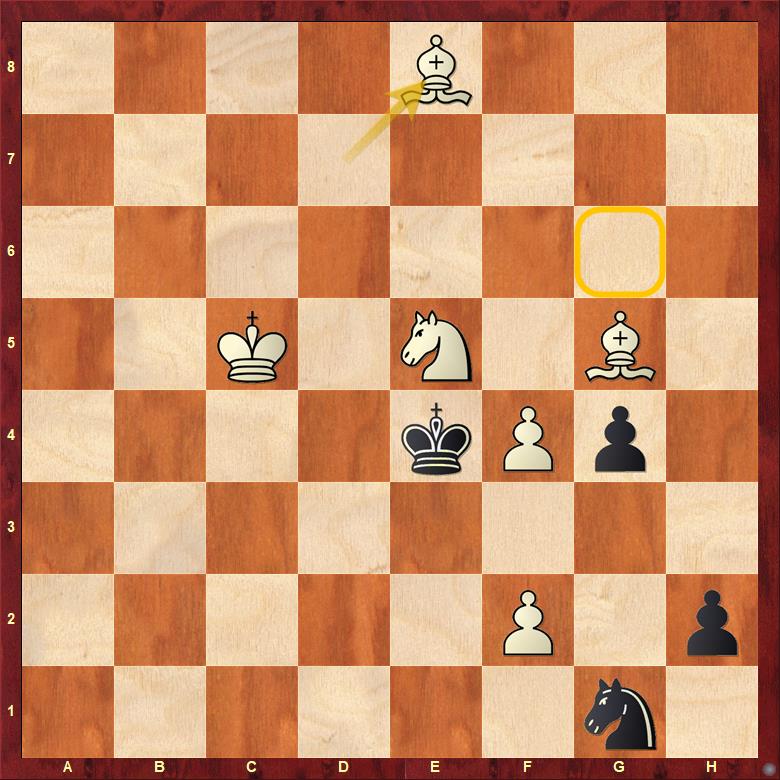
The play continues 3...Kf5 4.Bg6+ Ke6 5.Bh5 and now Bxg4# is threatened!

Next comes 5...Kf5 6.Bxg4+ Ke4 7.Bd1 threatening Bc2#
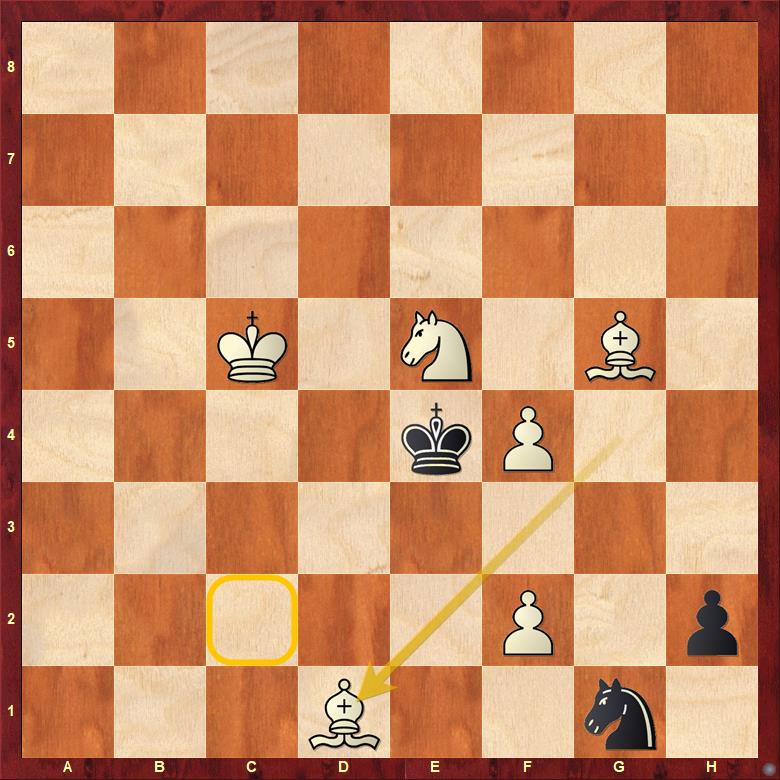
With 7...Kf5 8.Bc2+ Ke6 the bishop completes its Rundlauf, but to what end?
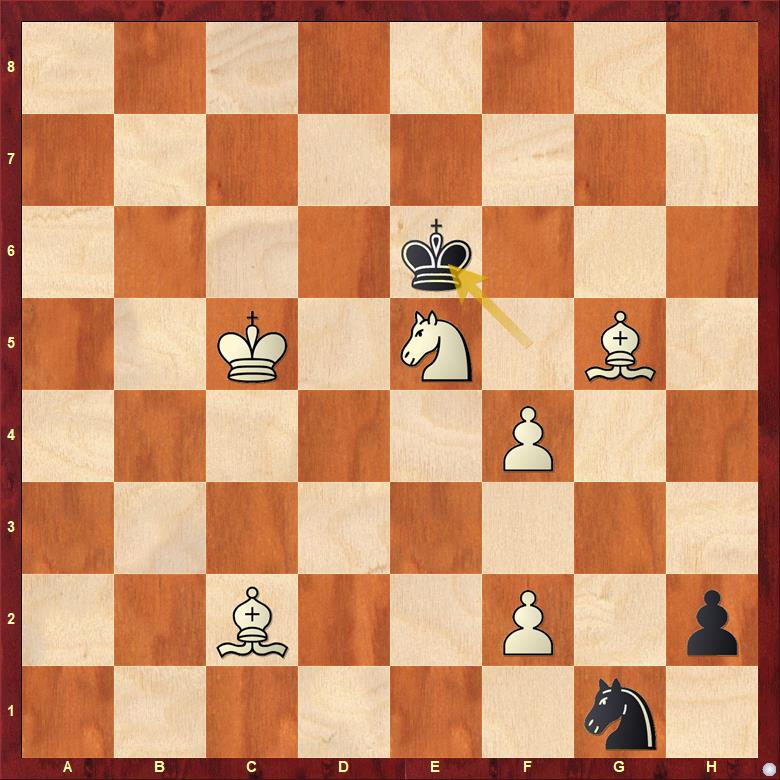
Well, without the g4 pawn here comes 9.f5+ Kxe5 10.f4# an exquisite pawn mate!
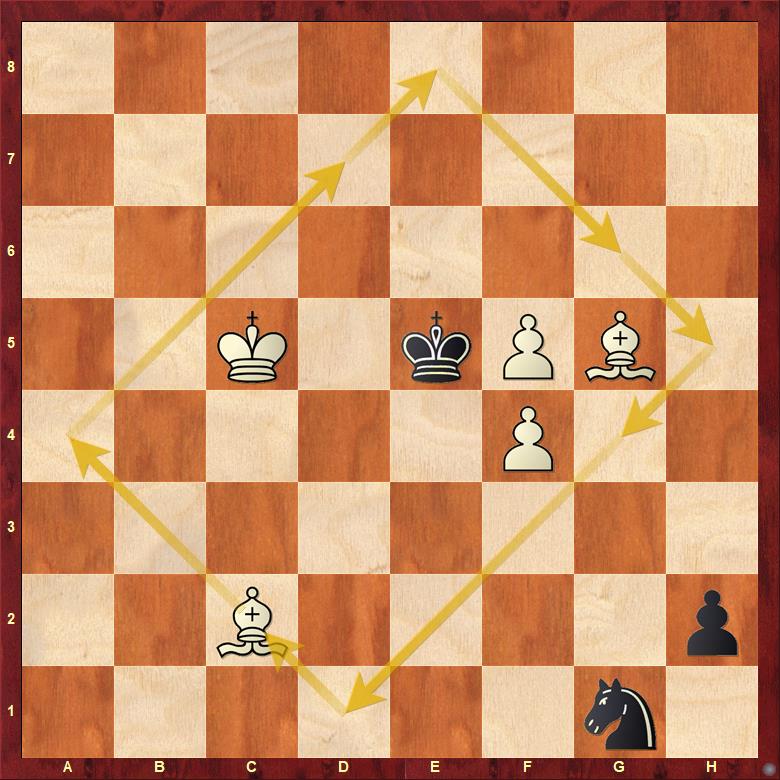
The next problem we see is another masterpiece achieved with slender force but this time showing the theme with a knight!
PROBLEM 2
A.Shuriakov & V.Syzonenko, Chervony Girnik 1985
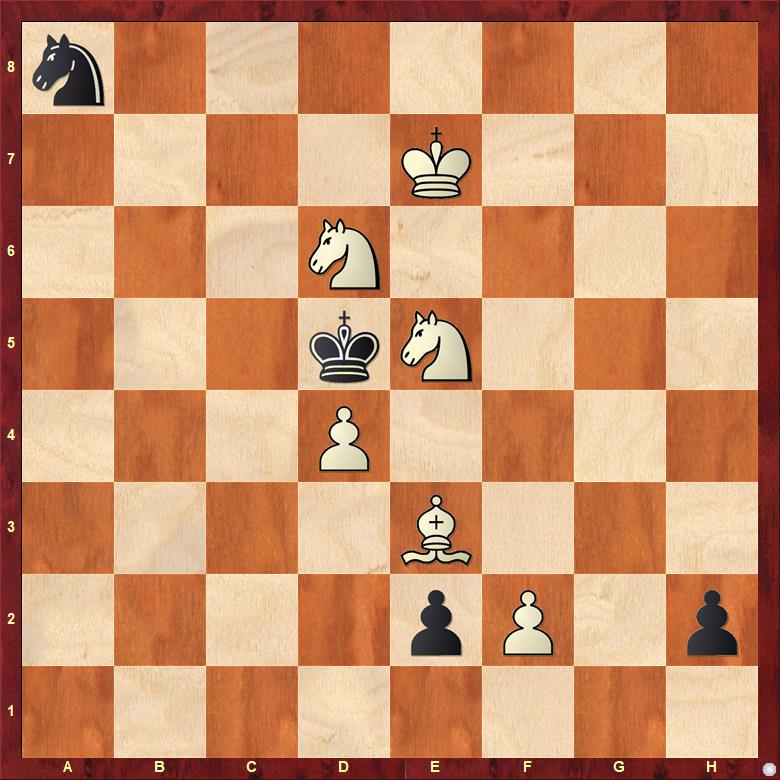
Here, the starting position is similar to that in Problem 1, the centralized knights on e5 and d6 limit the black king's flight. The key move is 1.Ne8 threatening Nf6#, Black is forced to move 1...Ke4 and the play also continues in the same vein, with white threatening a series of mate-in-1s: 2.Nf6+ Kf5 3.Nh5 (Threat: Ng3#) 3...Ke4 4.Ng3+ Kd5 5.Nxe2 (Threat: Nc3#) 5...Ke4 6.Nc3+ Kf5 7.Nb5 (Threat: Nd6#) 7...Ke4 8.Nd6+ Kd5 and the knight has completed its trip!
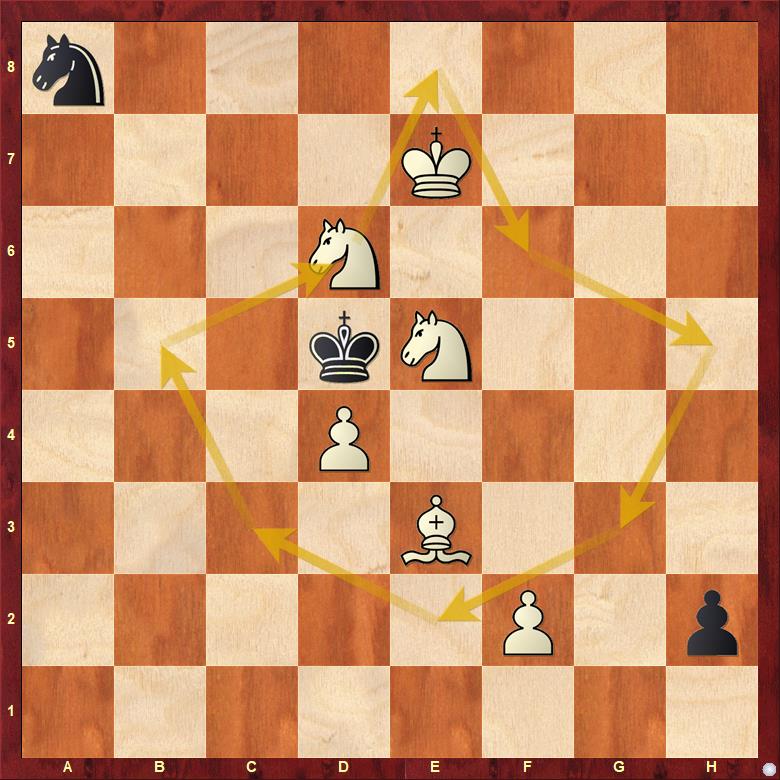
Now White can go 9.Nd3! threatening Nb4#, earlier with the black pawn on e2 this could be simply defended by e1=Q, but now Black has to go 9...Kc6 and after 10.d5+ Kc7 (10...Kxd5 11.Nb4+ Ke5 12.f4#) 11.Nb4 there is no way to prevent 12.Na6#
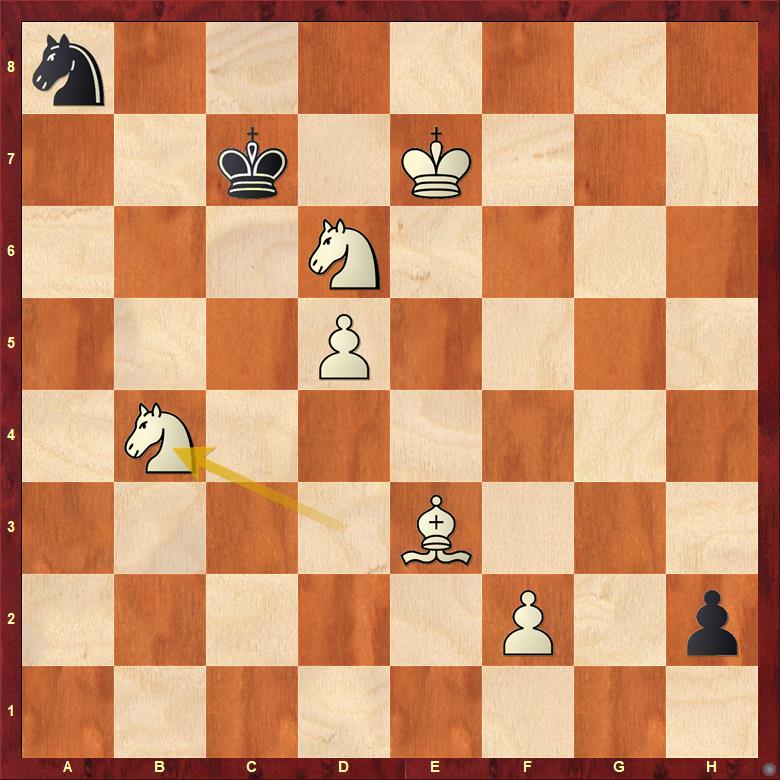
PROBLEM 3
Now here is a mind-boggling production by the first German Grandmaster of chess composition Hans Peter Rehm. It shows a pair of rook rundlaufs (yes, a pair!) with amazing perfection!
Hans Peter Rehm, Deutsche Schachblätter 1977, 1st Prize
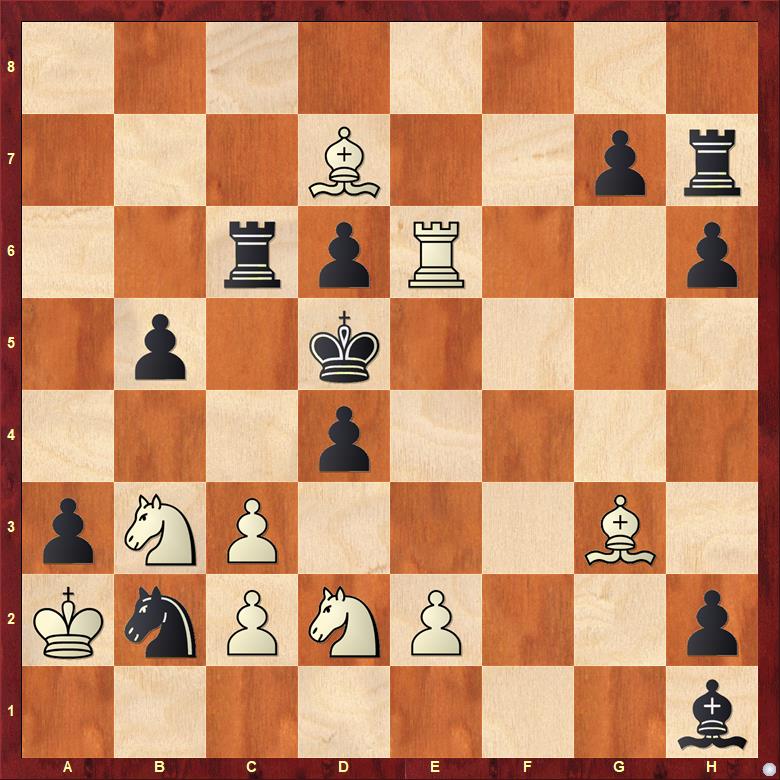
The solution begins with 1.Rg6 (threatening Be6#) Black must vacate the c6 square for the king, but how? 1...Rb6 runs into 2.Rg4 after which Rxd4# can't be stopped, so by elimination the best move for Black is 1...Ra6, the play continues 2.Rg4 Be4 3.Rxe4 Ra4 (Note 2...Ra4 right-away leads to quicker mate with 3.c4+ Rxc4 4.Rg6 Rc6 5.Be6#) 4.c4+ Rxc4 5.Re6 Rc6 and both the rooks have completed their round-trips. Now what?
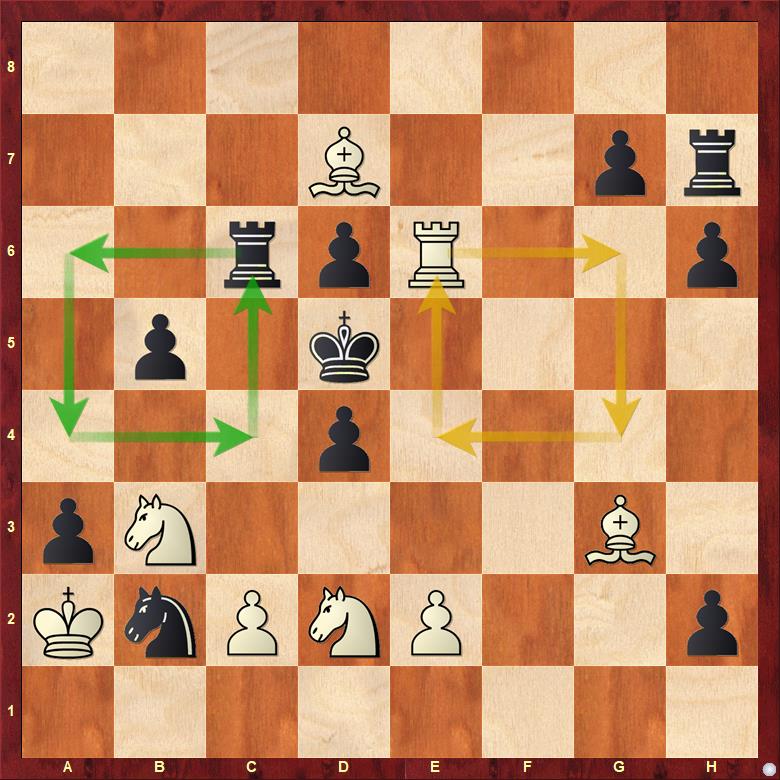
The play goes 6.Rg6 Ra6 once again, and then comes 7.Rg4 Ra4 8.c4+
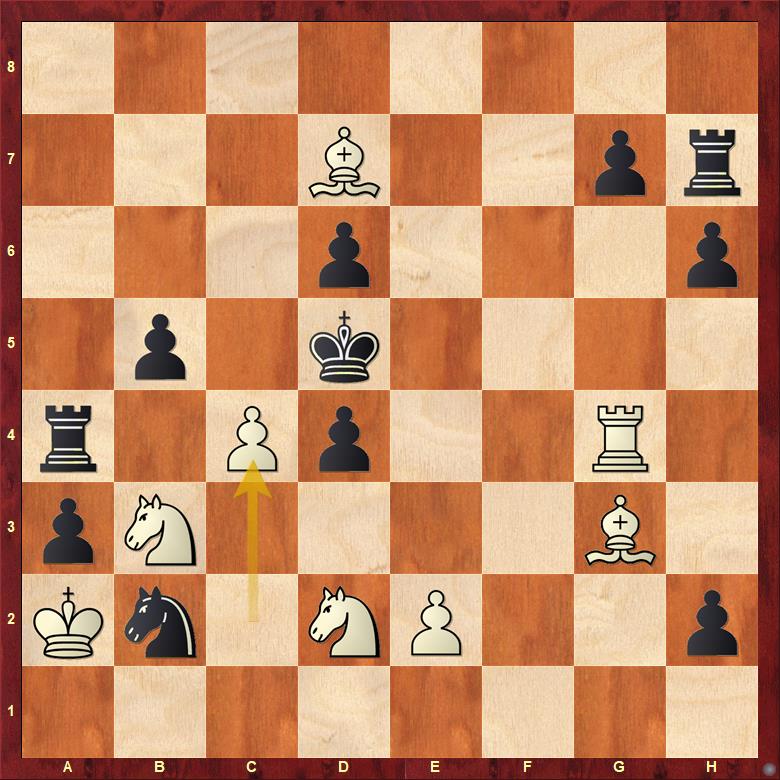
8...dxc3 (e.p) runs into 9.Rxa4 and now 10.e4# can't be prevented. So the mainline goes 8...Rxc4 and now comes the final blow 9.Rg6 threatening 10.Rxd6#
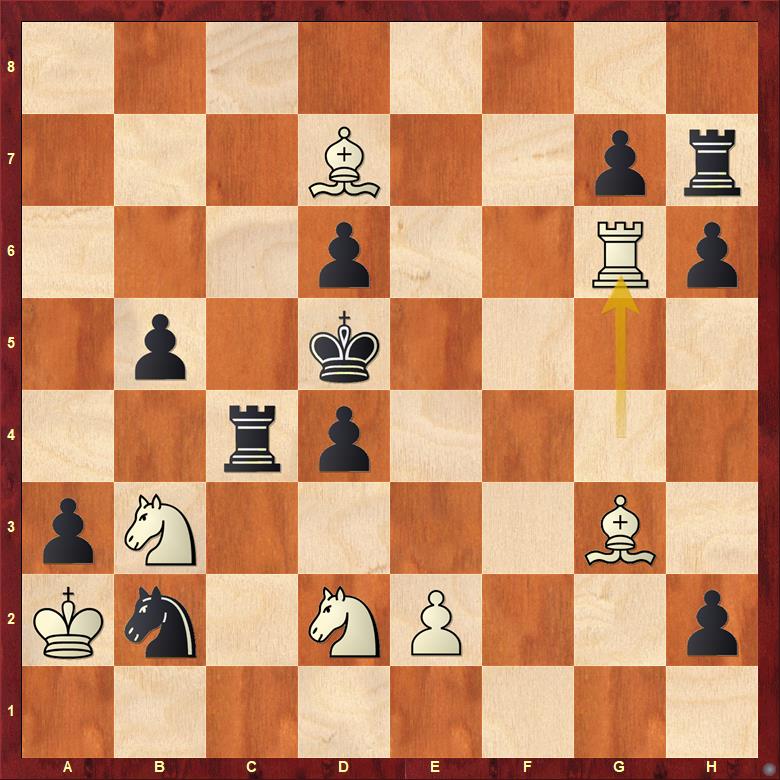
A brilliant stratagem by a brilliant composer!
PROBLEM 4
The problem we have now is in spirit akin to the king triangulation idea we have seen in the beginning of this article!
René Jean Millour, The Problemist 2004, 1st-2nd Prize
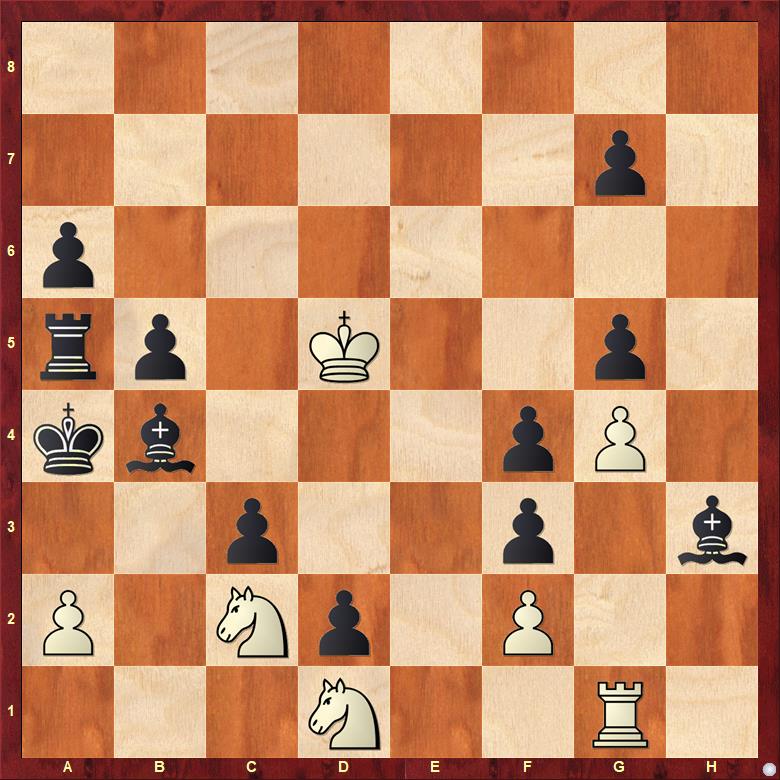
In the above position a mate is set with Nxc3 if the black bishop ever leaves the b4 square. Therefore the only mobile pieces Black has is the bishop on h3 and the pawn on g7, if White manages to put these two pieces off the board then the bishop on b4 will be forced to move and Nxc3# will then follow! So how does White go about executing this plan? Well, check it out below for yourself!
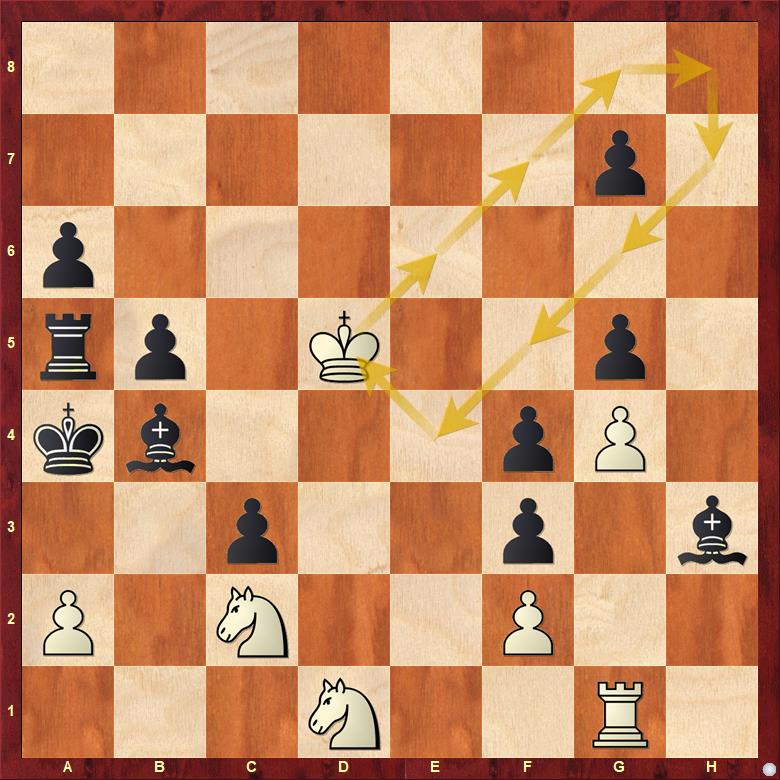
So, we saw four renditions of the rundlauf theme with Bishop, Knight, Rook, and King. To bring this to a successful completion we must also have a queen rundlauf. We pose the next problem as an unsolved exercise for you to think about. It's not difficult and that it involves a queen rundlauf should be a big hint!
Erik Gustav Schultz, Tidskrift för Schack 1904, 1st Prize
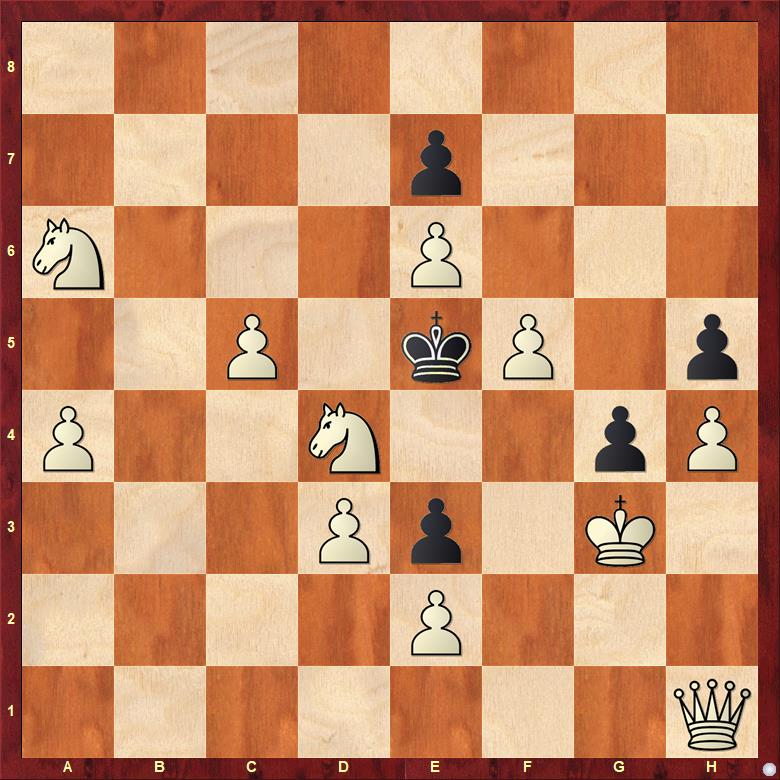
About the author

Satanick Mukhuty is an author and social media manager at ChessBase India. He has a background in Mathematics. He is an avid enthusiast of composition chess and is sincerely committed to promoting it around the world.

